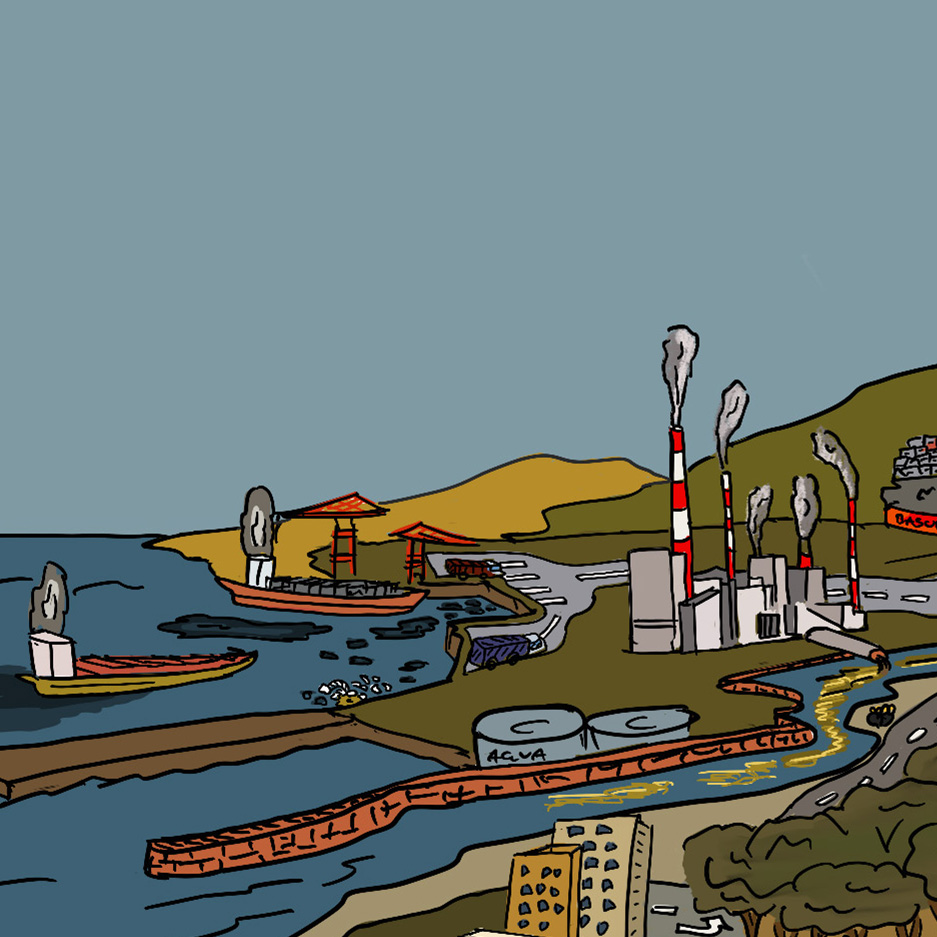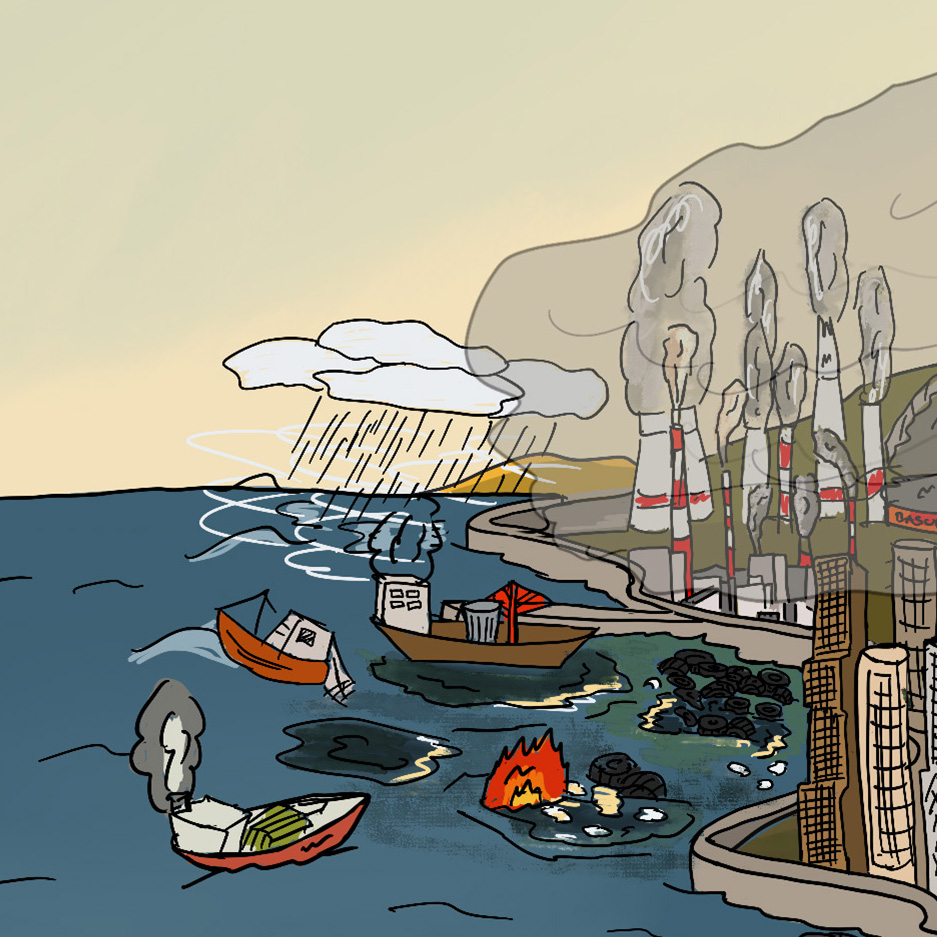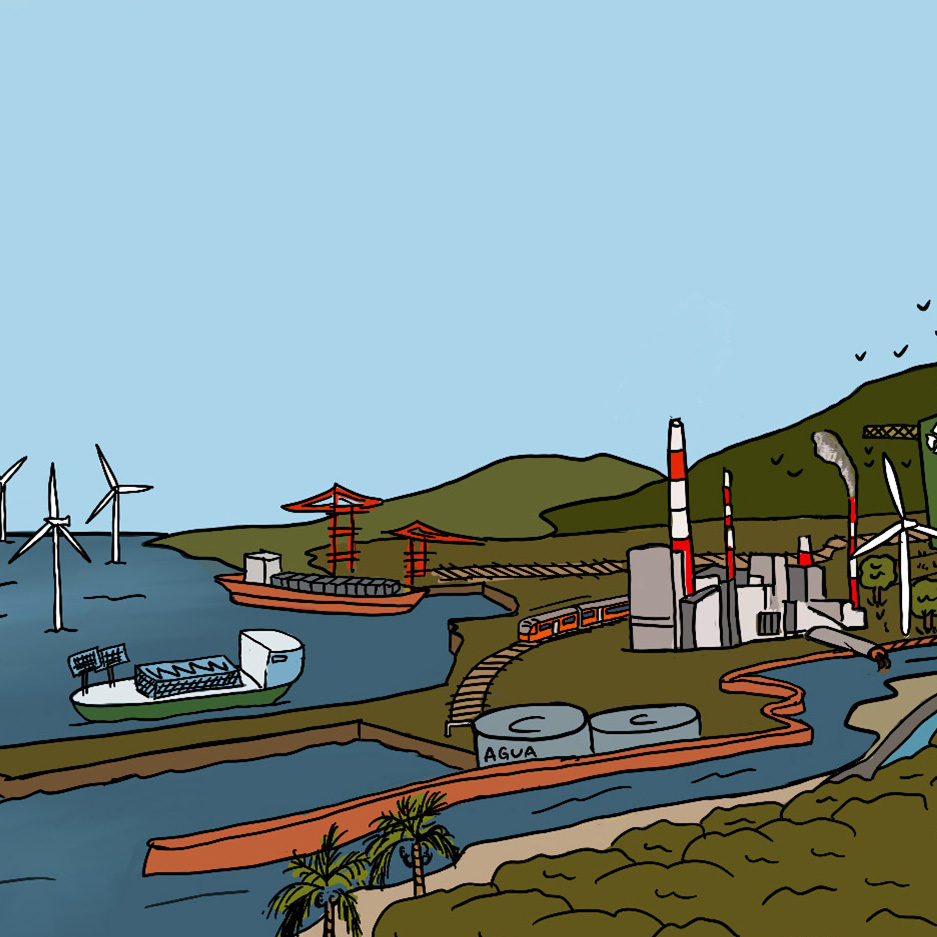
Present. Port and industry.
We see a current industrialised setting. Development of this area is capital intensive, and development is already at odds with natural resources. However, politically it seems to be a good approach, as politicians can support investment and job creation—although most of the benefits will be to the capital sources, and “competitiveness” may be described in terms of low wage growth, with high and increasing pollution, and most processes are carbon-intensive. Few companies run most things.
Production is concentrated in a few places and market access is restricted. Industrial research and innovation is concentrated in the few acting companies.
Ship’s emissions affect not only the seafront, but also air and rain further inland.
Actors of all types look to “game” around norms and rules, and environment, marine, and natural resources are the last thing on anybody’s list of concerns. Production is in a take-make-waste chain.

